A special type of bandage manipulation, an occlusive dressing is a method sealing the wound focus, used for injuries requiring sterile conditions and protection from the external environment. Formerly used during hostilities, when wounds from firearms were common. Today it is used to seal chest wounds of any origin.
Record content:
- 1 Classification
- 2 Appointment
- 3 Areas for application
- 4 Required tools
- 5 Sequencing
- 6 Sealed Type Use Cases
- 7 Treatment of skin pathologies
- 8 Fastening methods
- 9 Rules and guidelines
- 10 How to avoid unwanted consequences?
- 11 Replacement methods
- 12 Video about occlusive dressings
Classification
Kits containing all the necessary tools for applying occlusive dressings are available from pharmacies. There are 2 main classifications of dressings: according to the material from which they are made (cloth, plaster, gauze, splinting and special dressings), and according to their function.
Based on the purpose, the following types are distinguished: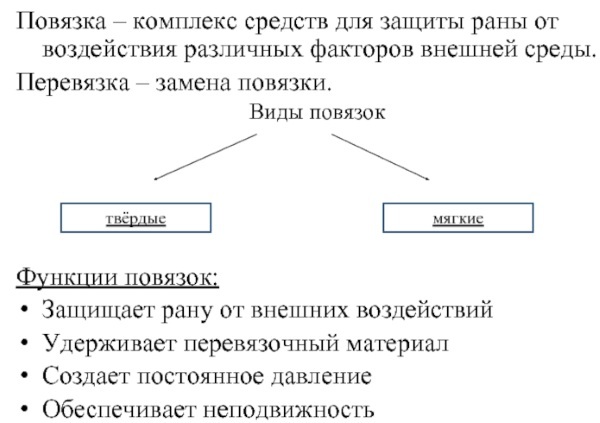
Name |
Purpose |
| Protective | This dressing is called aseptic, it is used as a prophylaxis for secondary infection. |
| Medicinal | The lower layers of such a dressing are moistened with a medicinal substance, which allows it to act on the wound for a long time. |
| Immobilizing | It is used in traumatology to immobilize a limb or part of it in order to avoid displacement of fragments. |
| Hemostatic | As the name suggests, it is applied to stop bleeding. |
| With traction | It is necessary for stretching the fragments. |
| Corrective | Called to repair damage. |
| Occlusal | The main function is to close the wound with pneumothorax. |
Appointment
The bandage is applied to prevent infection of the wound surface, as well as to prevent air from entering the abdominal cavity.
Sometimes it can be used in other cases:
- Dermatological. For the treatment of acne, fungal infections.
- Bandages. For the treatment of arthritis of the extremities.
-
Ophthalmic. For the prevention of eye infections.

- Traumatological. In case of injuries in violation of the integrity of the skin.
Occlusive dressings are the most important way to seal open chest wounds. It helps to close the wound opening and stop the ingress of air, liquids, microorganisms and other unwanted foreign bodies.
In addition, modern dressings enhance the healing effect, which helps not only patients with acute conditions, but also in the treatment of chronic wounds and other skin diseases.
Areas for application
The main area of overlap is the chest with open pneumothorax. That is, with a wound that “sucks in” air on inhalation, and removes it on exhalation.
Such damage is life-threatening, since the incoming air gradually compresses the lung, which makes it less and less involved in the act of breathing, and this, in turn, complicates the work of the heart. An occlusive dressing is used to close the wound.
There are several more areas where an occlusive dressing can be applied:
- Face. The dressing is part of what is called occlusive therapy, which is used to treat acne or scars. Apply for 2-3 hours. Sometimes, with a deep defeat, at night.
- Nails. In this case, the dressing is used as a component of the main therapy for the fungus. The lower layers of the dressing are impregnated with antifungal drugs, the dressing is tightly applied to the affected area.
- Head. It is part of a comprehensive treatment for psoriasis.
- Joints, tendons. It can be used as a bondage for arthritis, sprains.
- Gunshot wounds, burns, purulent inflammations.
Required tools
Applying an occlusive dressing cannot do without the following tools:
- syringe;
- tweezers;

- sterile gauze pad;
- adhesive plaster;
- antiseptic;
- petrolatum;
- disinfector;
- protection of the performer;
- pain reliever;
- oilcloth / cellophane;
- tray for collecting material;
- tray for unused instruments.
Sequencing
Overlay includes 3 main stages: preparatory, main, and final.
The preparation is as follows:
- Reassure the patient, help him to accept a semi-sitting position, inform about what will happen now and obtain consent to the procedure.
- Put on overalls, clean hands and put on gloves.
- Examine the site of injury, making sure of the preliminary diagnosis and finally establishing the appropriateness of applying a bandage.
This is followed by the main stage of the procedure:
- Treatment of the near-wounded surface with a napkin or gauze ball with an antiseptic solution. First, the processing must be carried out wide, then narrowly.
- A napkin is applied directly to the wound surface.
- The skin around the lesion is treated with sterile petroleum jelly applied to a ball of cotton wool and gauze.
- Applying the base layer (to achieve wound sealing, the edges of the material must come into contact with sterile petroleum jelly).
- A cotton-gauze pad is placed on the projection area of the wound.
- With an adhesive plaster, the bandage is fixed to the area around the wound.

At the final stage, additional assistance is provided to the patient and monitoring of the dressing:
- If necessary, anesthesia is performed.
- Used material and dirty instruments are placed in special containers for further destruction and sterilization.
- Hand treatment after removing the special protection.
- Filling out medical records.
- If the procedure was carried out outside a medical institution, urgent transportation of the patient for further examination and medical measures.
In the field, the overlay algorithm changes somewhat:
- Treatment with iodine of skin areas around the wound.
- Treatment of healthy skin areas with petroleum jelly.
- Covering the wound surface with a bandage or napkin to prevent the ingress of dust, dirt and other small foreign bodies.
- A sealed material (oilcloth or polyethylene film) is placed on top of the sterile napkin to prevent air from entering.
- Fixing the sealed material with a plaster or other method (before fixing, it is necessary to remove the air remaining there from under the adhesive tape).
- Fixation with a sterile bandage.
Sealed Type Use Cases
Occlusive dressings are a method of treatment for purulent wounds, acne, gunshot wounds, burns and many other injuries, but their main application is for open and valve pneumothorax.
Open pneumothorax implies a wound in the chest cavity through which air both enters and exits. The main danger of such damage is the possibility of lung collapse, which can disrupt not only the respiratory function, but also the work of the heart.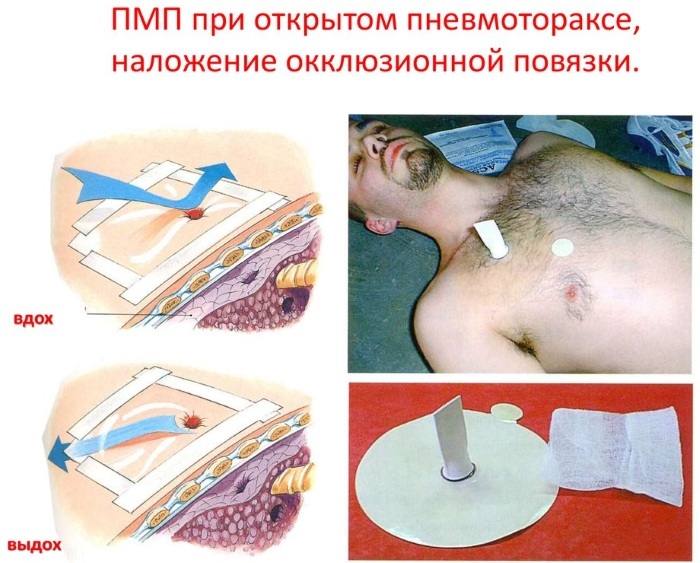
Valvular pneumothorax is an even more dangerous condition that requires immediate specialist assistance. The peculiarity of this state is that air continues to flow into the chest for inhalation, but does not come out, as on exhalation the edges of the wound fall down in the form of a valve, preventing it release.
To determine the presence of open pneumothorax, it is necessary to identify the following signs:
- Asymmetry of raising and lowering the sternum during breathing.
- Open wound of any origin in the chest area.
- Pale skin around the wound.
- Discharge from a wound of foam and blood or clots.
- Decreased blood pressure, decreased heart rate.
Occlusive dressings are also one of the main methods of stopping bleeding for large wounds, serious cuts and respiratory diseases with scarring.
Treatment of skin pathologies
In dermatology, various kinds of dressings are often used, as they allow you to close skin defects, speed up the processes restoration of tissues and increase the permeability of drugs, thereby allowing many times to reduce them dosage. In addition, they protect the patient's clothing from contamination with wound contents.
The occlusive type is used most often, but sometimes the non-occlusive type is also used, for example, gauze dressings. They let air into the wound, unlike the first type, which is sometimes necessary to increase the recovery rate, and it also helps to dry out the wound focus.
Wet-drying dressings can be used, which are moistened from time to time with a special solution (more often total, common saline), which are applied to cleanse the wound from foci of necrosis and large blood clots. After the solution has completely evaporated, such dressings are removed, since there is a high risk of sticking to the skin surface.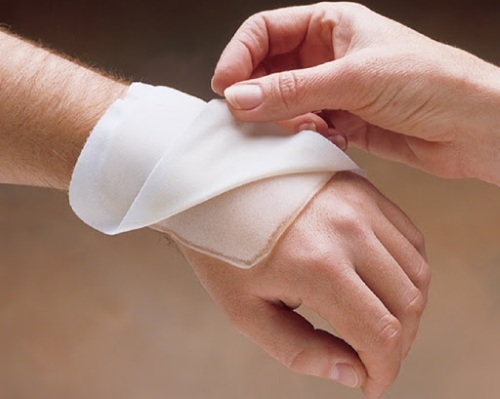
Of the occlusive, the most commonly used are polyethylene (ordinary plastic bags can act in their role) or special transparent semi-permeable dressings. They enhance the absorption of drugs and increase the effectiveness of the use of ointments, powders and other methods of external therapy.
For congestive dermatitis and ulcers, zinc-gelatin dressings (also called Unna boots) are often used, sometimes hydrocolloid dressings are attached under a regular gauze dressing. In addition, there are special types of dressings made with the introduction of medicinal substances, which are applied to lesions that are resistant to other types of therapy.
To reduce the activity of the inflammatory reaction, occlusive dressings can be applied over anti-inflammatory drugs, improving their local action by increasing their absorption properties. It is effective in treating psoriasis, systemic lupus erythematosus, and many other autoimmune diseases.
The treatment algorithm using occlusion is as follows:
- Wash skin thoroughly with soap, but do not use antibacterial agents.
- Lubricate the skin with a corticosteroid-based ointment.
- Cover the area with a film with sealing properties.
- Remove air trapped under the film and secure it with adhesive tape.
- Apply a non-sterile bandage for 2 hours.
- Remove the bandage, reapply the ointment.
It is very important to observe the time intervals so as not to activate the opportunistic flora.that is on the skin of every person. Neglect of this rule can lead to re-infection of this area of the skin and the appearance of inflammatory and even purulent processes in the hair follicles.
Fastening methods
According to the method of fixation, bandage and bandless bandages are distinguished. An occlusive dressing is most often fixed without a bandage using glue or adhesive plaster.
If we talk about the first method, then cleol, collodion and BF-6 glue are used here. The glue solution is applied to the skin along the edge of sterile wipes and after a minute, gauze is applied on top, smoothing it through the fabric. After the glue has hardened a little, the edges of the gauze should be peeled off a little and the excess part should be cut off with scissors.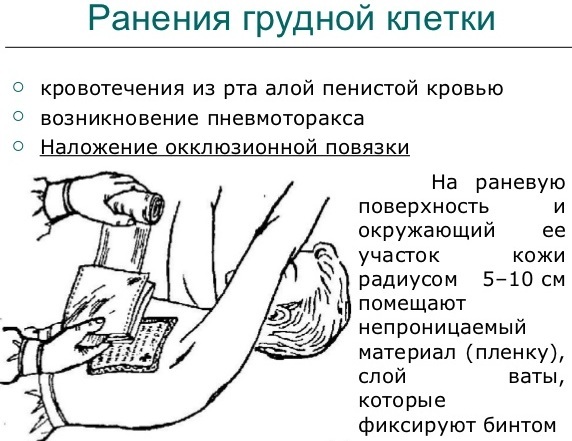
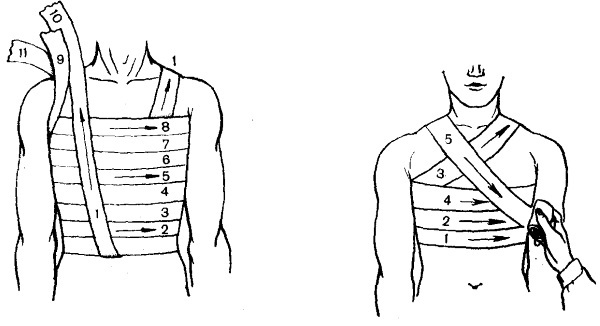
Next, you need to smooth out the sharp corners and re-press the gauze areas to the skin. If you use this method frequently, a small layer of adhesive will usually remain on the skin, which can be removed with diethyl ether (or alcohol, but it will take more time).
Positive aspects of using glue: high speed of application, small size. Negative: frequent allergic reactions, frequent detachment of the edges when applied to moving parts of the body, inability to use on the perineum and face due to excessive glue activity.
The adhesive plaster method of fixation is used most often due to its availability and simplicity. The algorithm is simple: several strips of adhesive tape are taken, applied to a sterile material (with the expectation that 3-4 cm protrude beyond the edge of the dressing) and stick to the skin. It is necessary that the site has been previously shaved, which will make the mount as resistant as possible.
The advantages of this type of fixation are the same as the previous one, but with one additional one: the adhesive plaster can be used for minor injuries to the face and perineum. Disadvantages: inability to use on hairy areas, the possibility of allergic reactions, insufficient strength when applied to the area of the joints, inability to fix wet bandages.
Fixation methods are also distinguished depending on the location of the damage. If the wound is in the area from the first to the third rib, then the fixation should be carried out in a spike-shaped manner, if below the shoulder joint, then the spiral method should be chosen.
Rules and guidelines
Occlusive dressings are most often a method of providing emergency care, so it is advisable to follow some rules and requirements that will help avoid the development of complications, and the patient recovers faster:
- The person applying the bandage should be face to face with the patient to notice the appearance of a grimace of pain, which may indicate a worsening of the condition.
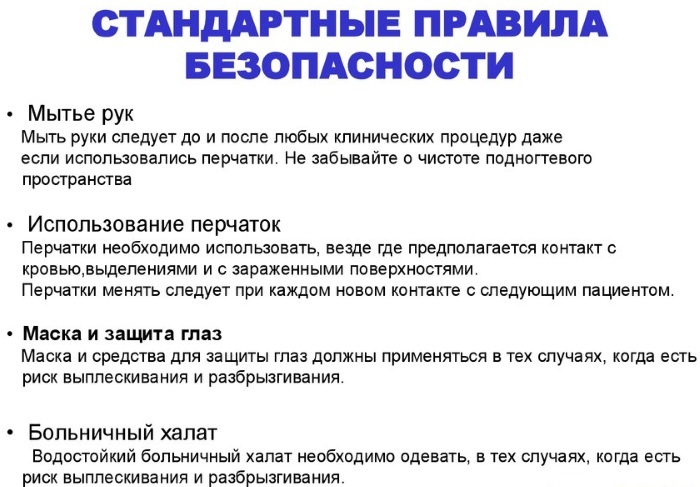
- The part of the body to be fixed should be in a comfortable position for both the victim and the caregiver.
- The beginning and end of the dressing is carried out on intact tissues.
- The beginning of the procedure is 2 securing turns.
- The bandage must be held in the working hand.
- Bandaging occurs from left to right.
- Each new layer overlaps the previous one by a third.
- The last turn is fixing, the fixing method depends on the area of application.
- The dressing should not only perform its main function, but also, as far as possible, not cause additional discomfort to the patient.
How to avoid unwanted consequences?
To reduce the risk of complications and to speed up healing, it is necessary to try to perform the procedure strictly according to the algorithm.
You can also highlight some actions, the commission of which can lead to undesirable consequences:
- Washing the wound with water. In order to avoid the development of a purulent infection, it is not recommended to rinse the wound with water, as this increases the risk of introducing additional dirt and microbes there.
- Removal of earth, sand and stones. It is completely impossible to delete them, so do not waste time on this. The main thing is to clean the edges of the wound and lubricate them with iodine, which will greatly increase the effectiveness of the procedure.
- Removal of blood clots. Clots form microthrombi, which help less blood flow to the wound. When they are removed (as well as the removal of foreign bodies), the blood flow in this place is restored, and therefore, extensive bleeding may occur.
- Duration of sealing - no more than 5 hours. Air should not penetrate into the chest, but it is still necessary for normal tissue healing, therefore, after 5-6 hours, the bandage must be removed for a while. If during this time the patient has not received help to eliminate pneumothorax, it is applied again.
Replacement methods
It is most effective to use special kits with an occlusive patch, which is made of an airtight material that does not cause allergies. But there are situations when such a set is not at hand, then you can use the tools at hand.
The need to apply an occlusive dressing may arise unexpectedly, therefore, it is useful to know what materials can replace it for a while:
- rubber or rubberized fabric;
- oilcloth;
- film;
- silicone pad;
- adhesive plaster.
The main requirement for materials is that they should not allow air to pass through, since if it is not observed, then the whole point of the occlusive dressing disappears.
Also, materials at hand are usually non-sterile, therefore, it is necessary to disinfect them before using them. This can be done either with the help of special preparations, or simply with alcohol.
Correct and timely application of an occlusive dressing is a guarantor of the preservation of a person's life. It should fix the material well, help tighten the wound and seal the pneumothorax. However, the patient urgently needs to be taken to the nearest medical facility for further assistance.
Author: Alexander Todorov
Video about occlusive dressings
Chest occlusive dressing:

